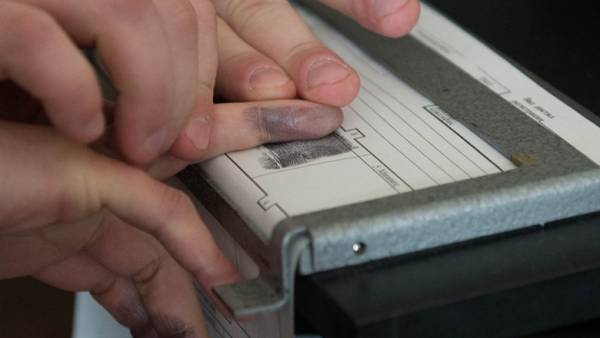Dark matter: how investigators solve crimes from the past
MOSCOW, 10 APR — news, Andrey Grigoriev. According to official data of the Investigative Committee of Russia for seven years revealed more than 70 thousand crimes committed in the past. One tenth of the murder. About how many years after picking up the keys for the desperate, it would seem, to criminal cases — in the material RIA Novosti.

Left fingers
Disclosure of crimes of last years in the TFR dedicated analytical group. They are, as a rule, consists of investigators, criminalists, police officers, employees of the Federal penitentiary service, the experts and veterans of the investigation. These “special forces” is not only at headquarters but also in the territorial departments, which, according to statistics, the largest share of “visyakov.”
“When the Republic of Crimea returned to Russia, we picked up the materials at the 59 unsolved murders, says RIA Novosti the official representative of SK of Russia Svetlana Petrenko. — Investigators with the forensic center of the MIA studied about 300 fingerprints, never before are not evaluated neither at the regional nor Federal surveys”.

So managed to find the killer of Crimean Valentyna Naumchuk. The crime was committed in 1998. Ukrainian judicial doctors then found that she was hit on the head and then strangled. In the house killed the experts took some fingerprints belonging to the unknown. However without delay to detain anyone failed and the case moved into the category of “visyakov.”
In 2014, after the reunification with Crimea, development of relations of the lost was done by Russian investigators. To fingerprint examination called all her friends and neighbors. One of them, Seideman Seitosmanov, the fingerprints matched with those found on the murder scene. Under the pressure of evidence, he confessed and the security forces completely recreated the scene of the crime. “Seitosmanov thought Naumchuk went somewhere, and decided to Rob her home, — have explained in SK. When he removed window slats, inside glimpse of someone’s silhouette”.
Naumchuk went outside and went to the corner of the house, behind which was hiding Seitosmanov. Fearing exposure, he dealt with the woman, and the body buried in the yard. “To check if there’s anything left in the house witnesses, Seitosmanov got inside, but found no one, continues Petrenko. — From the estate he, too, nothing was taken, but the order “heritage”, leaving evidence.” Immediately after the murder culprit fled to Russia, where he was hiding until the hype died down. In the Crimea he returned full of confidence that got away.
The experts regularly “wool” filing with the fingerprints of thousands of people trace their hands, left at the crime scene 20 years ago, may appear in the database at any time.
So, in 2016, for administrative violations detained the inhabitant of St. Petersburg and made a comparison. The fingerprints matched with those found at the murder scene in Leningrad in 1992.

Gene killers
However, the usual investigative methods do not always work.
The more time that passes since the murder, the more difficult to field investigators to trace the criminal.
Sometimes prints are left. Here, in the case included experts in exploring human genotype. This is one of the most difficult areas in forensic science.
In 2011, the Playground at the school in Yekaterinburg found the mutilated body of 14-year-old girl. Hot on the trail to solve the murder failed, so investigators went the other way. All men living close to the school, took a biomaterial for molecular analysis. Experts examined more than three thousand genotypes and only six years later was able to establish the main suspect. It appeared to be the man during the investigation, investigators came three times. And left with nothing.
Sometimes the DNA profiles of all “interesting” for the investigation of citizens takes decades. “Last year, thanks to a re-examination of the molecular-genetic objects seized from the scene of the murder of two young children in the Perm region, were able to determine male genotype, — told RIA Novosti in the TFR. — It coincided with the genotype previously convicted resident of Bashkortostan, which is not considered as a suspect. Now the criminal investigation is ongoing, although the moment of murder has passed 12 years.”

DNA examination is one of the most effective and rapidly growing areas of forensic investigation of evidence.
Jewelry work